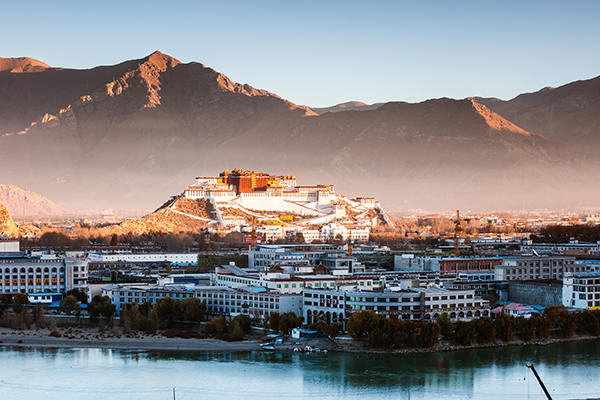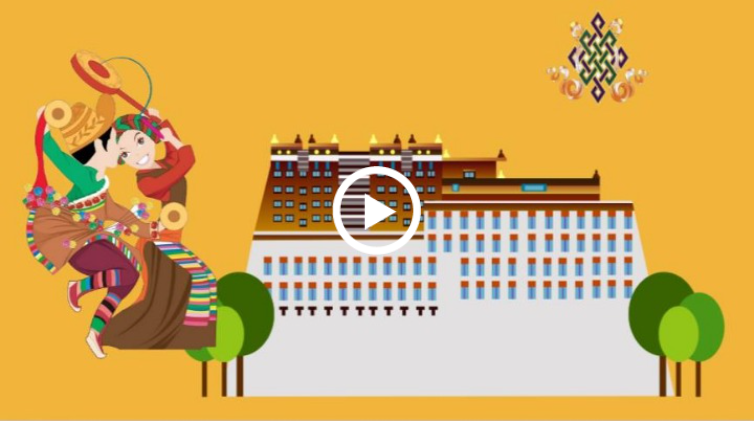Today's Tibet shows path to modernization: Expert
Updated: 2023-04-14 (China Daily)  Print
Print 


The development of the Tibet autonomous region has always been one of the priorities for the central government and the modernization of the autonomous region reflects Chinese modernization, a researcher at the China Tibetology Research Center said.
By taking measures to liberalize social productivity, the central authorities laid a solid foundation for Tibet's modernization, Kelsang Drolma said in a China Daily signed article to celebrate the 64th anniversary of Tibet' democratic reform launched on March 28, 1959.
Today, Tibet is a socialist society where all people enjoy equal rights and freedom in all aspects of life, the expert said.
Since the founding of the People's Republic of China, especially since the launch of reform and opening-up, the Communist Party of China has led the Chinese people in promoting socialist modernization and adopting a modernization path with Chinese characteristics, according to the article.
Tibet's modernization process has followed the correct direction, and gradually developed its own characteristics. With the long-term support of the central government and the assistance of other regions, the economic structure of Tibet has undergone a thorough transformation, Kelsang Drolma wrote.
She also added that Tibet's economic structure is improving steadily. Before the peaceful liberation of Tibet in 1951, more than 90 percent of the people in the region were serfs who suffered economic exploitation and poverty. To change the situation, the central government led the Tibetan people in realizing development through socialist modernization practices, which helped them get rid of poverty and pursue high-quality development.
The implementation of the poverty alleviation program helped to fulfill the Party's promise of leaving no one behind on the road to realize moderate prosperity, as it ensured all 74 counties in Tibet were lifted out of poverty by the end of 2019. This also helped China realize the first centenary goal of building a moderately prosperous society in all respects, the article stated.
After the peaceful liberation of Tibet, the construction of the Qinghai-Tibet and Sichuan-Tibet highways greatly shortened the distance between Tibet and the rest of the country. And the establishment of new schools allowed the people of the plateau to see a different world, a world of modern education, Kelsang Drolma said in the article.
It also said that the democratic reform following the liberation of Tibet helped to overthrow the old system, allowing the Tibetan people to live with dignity, exercise freedom of action, and adopt modern ways in a socialist democratic country. Today, their rights are protected by national laws and regulations, and their needs are met.
To improve the people's sense of gain and happiness, more than 80 percent of Tibet's budget is devoted to improving people's livelihoods. In fact, Tibetan people's livelihoods have been improving at a faster rate than the national average.
The development of education, healthcare and other sectors has greatly improved the material and spiritual lives of the local people. Laws and regulations related to the protection and development of ethnic languages and scripts included in China's Constitution allow Tibetan cultural texts to be disseminated not only through books and classrooms but also through television and the internet.
The Qinghai-Tibetan Plateau has the world's most unique and harshest terrain with an unusual distribution of species. To protect this magnificent plateau, the central government has been promoting green and sustainable development in Tibet. It has also launched large-scale environmental protection projects, including reverting farmlands to forests and grasslands, and provided exemplary financial support for Tibet's green development, according to Kelsang Drolma.
Indeed, Tibet is taking big strides toward modernization that is in harmony with nature and conforms to the central government's new Tibet governance policy, which upholds the Party's leadership, the socialist system with Chinese characteristics and the system of regional ethnic autonomy, while strengthening ethnic unity, the researcher said.
As of 2017, Tibet's GDP growth rate had been in double digits for 24 consecutive years, the highest in the country. And as Tibet has been focusing more on high-quality development since 2018, the traditional barriers to industrial development have been broken, and green development enabled by industrial empowerment has accelerated, while digital industrialization has evolved rapidly and technological innovations have become a driver of the region's development.
While the development achievements of Tibet are the result of the unity and hard work of all ethnic groups living in the autonomous region, the modernization of Tibet is an apt example of what the Chinese modernization model can achieve, the researcher added.








